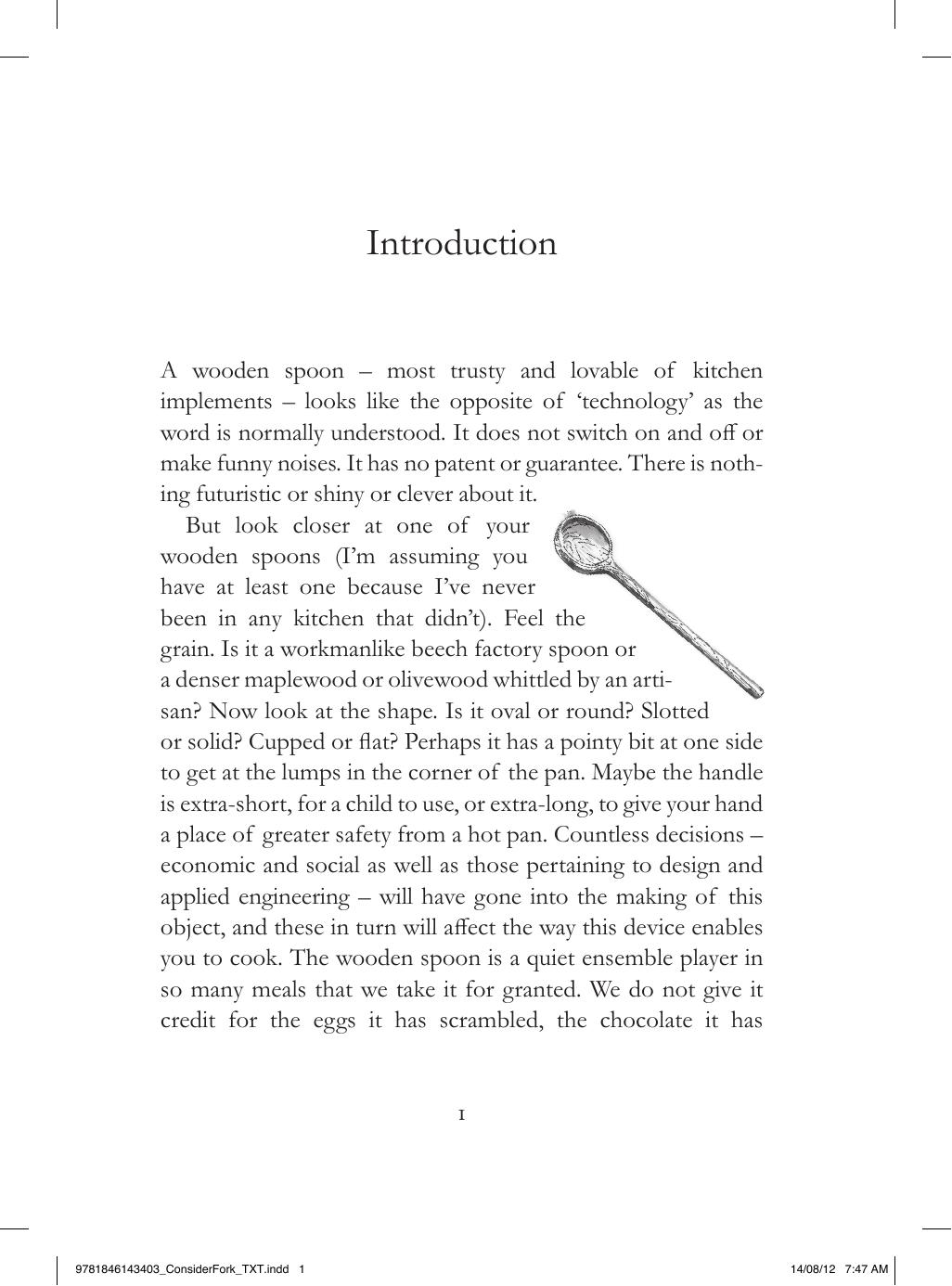Consider the Fork: A History of How We Cook and Eat by Bee Wilson

Author:Bee Wilson
Language: eng
Format: mobi, epub, pdf
ISBN: 9780465021765
Publisher: Basic Books
Published: 2012-09-15T07:00:00+00:00
My mortar and pestle comes from Thailand and is fashioned from craggy black granite. I like it far better than those restrained white-china mortars, whose rough insides set my teeth on edge, like chalk on a blackboard. Its downside is that it is probably the heaviest nonelectrical utensil I own. Every time I take the mortar down from its shelf, I have a moment of mild terror that I will drop it. Which may explain why I don’t actually get it down all that often. In my cooking life, it is an entirely superfluous piece of technology I don’t need it to grind flour or sugar, which come pre-ground in bags. Nor do I need it for pepper, which I can grind far more quickly and easily in a pepper grinder. Garlic is better crushed with the back of a knife on a chopping board. When I do use my mortar and pestle, it is a sign that I am feeling leisurely and want to experience a bit of kitchen aromatherapy. I might use it to pound up a pesto, relishing the sensation of crushing the waxy pine nuts against the coarse granite. Or I might crush the individual spices for curry powder (something I do about once a year in a spurt of enthusiasm before I get lazy and revert to the pre-ground type). In any case, the mortar and pestle is never necessary in a kitchen that also contains blenders and a food processor. It is a pleasure-giving device. I use it—or not—on a whim.
This is in stark contrast to the earliest crushing devices, whose basic mechanism was more or less identical to my mortar and pestle, but whose role was entirely different: to render edible that which would otherwise have been impossible to eat. It was a tool on which humans depended for survival. The earliest grinding implements go back around 20,000 years. Grinding stones enabled early populations to obtain calories from extremely unpromising foods: tough, fibrous roots and grains in husks. The process of making wild cereals digestible, through grinding and pounding, was difficult, slow, and labor-intensive. A grinder would be used, first, to remove husks or shells, and second, to remove toxins (in their natural state, acorns, for example, contain dangerous amounts of tannin, which partially leaches out when it is exposed to the air by the pestle). Third, and most important, it reduced the particle size of the food—whether nuts or grain—until it was as fine as dust: producing flour. Without grinding tools, there is no bread. The discovery of a 20,000-year-old basalt grinding stone near the Sea of Galilee alongside traces of wild barley suggested the very first experiments with some form of baking.
It would be several more thousand years, however, before stone grinding tools became common. Their use seems to have intensified during Neolithic times (10,300—4500 BC), which makes sense because this was the period when cereals began to be domesticated. Men started to settle down and deliberately plant grain, staying around in the same place long enough to harvest it.
Download
Consider the Fork: A History of How We Cook and Eat by Bee Wilson.epub
Consider the Fork: A History of How We Cook and Eat by Bee Wilson.pdf
This site does not store any files on its server. We only index and link to content provided by other sites. Please contact the content providers to delete copyright contents if any and email us, we'll remove relevant links or contents immediately.
| Culinary Biographies | Essays |
| Food Industry | History |
| Reference |
For the Love of Europe by Rick Steves(3547)
The Sprouting Book by Ann Wigmore(3064)
BraveTart by Stella Parks(2981)
Better Homes and Gardens New Cookbook by Better Homes & Gardens(2970)
The Death of the Heart by Elizabeth Bowen(2916)
Salt, Fat, Acid, Heat: Mastering the Elements of Good Cooking by Nosrat Samin(2669)
Sauces by James Peterson(2599)
Classic by Mary Berry(2510)
Solo Food by Janneke Vreugdenhil(2499)
The Bread Bible by Rose Levy Beranbaum(2487)
Ottolenghi - The Cookbook by Yotam Ottolenghi(2367)
Martha Stewart's Baking Handbook by Martha Stewart(2340)
Kitchen confidential by Anthony Bourdain(2325)
Betty Crocker's Good and Easy Cook Book by Betty Crocker(2288)
Day by Elie Wiesel(2253)
Hot Sauce Nation by Denver Nicks(2112)
The Plant Paradox by Dr. Steven R. Gundry M.D(2055)
My Pantry by Alice Waters(2052)
The Kitchen Counter Cooking School by Kathleen Flinn(2018)
